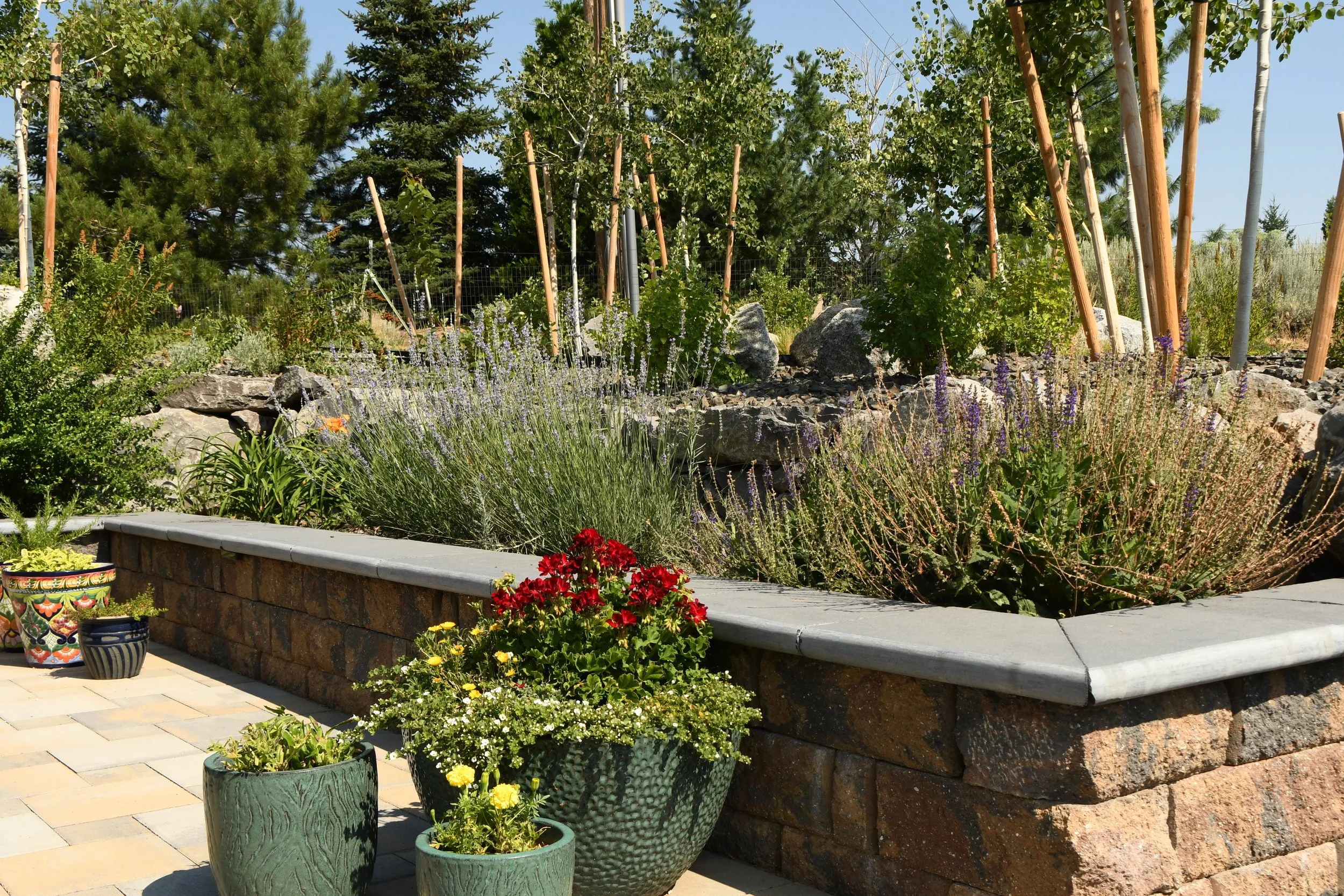Sustainable Landscape Architecture in the Reno, NV, Steppe Climate
Reno’s arid steppe climate lends itself to sustainable landscaping, but you’re not as restricted to your choices as you may think. Visually appealing water-wise landscapes can be challenging but done right, they are visitor-friendly and stunning. Here, we explore sustainable landscape architecture in the Reno, NV, steppe climate.
Plants That thrive in the Reno Area
Sustainable landscape architecture is mindful of climate, water use, as well as the aesthetics of the region. That involves prioritizing native plants that are perfectly adapted to the climatic conditions. However, non-native species that are suited to similar climates can also do well here. To conserve water and add color and texture to your landscape, here’s a list of plants that love the high desert climate.
Autumn joy sedum: A low-maintenance succulent with pink or copper flowers, this plant will attract bees and butterflies to your garden.
Blue oat grass (helictotrichon sempervirens): This gorgeous accent grass will be beautiful all year.
Catmint (nepeta x faassenii): This hardy lavender look-alike features gorgeous purple flowers—and yes, cats love it.
Hardy ice plant (delosperma cooperi): A wonderful perennial with bright purple flowers, it could be the perfect choice for lining walkways.
Silver mound (artemisia schmidtiana): A gorgeous low mound of silver-gray fern-like leaves adds visual softness to a harsh landscape.
Sulfur buckwheat (eriogonum umbellatum): Bring a splash of color to your landscape with these vibrant yellow, orange, or red flowers.
Yucca: The quintessential desert plant introduces a gorgeous early-summer fragrance.
Investing in drought-tolerant trees will provide shade for outdoor living spaces, reduce outdoor watering for smaller plants, and slash home cooling costs. Newly planted trees do require watering for the first few years until they are established, but the long-term gains are well worth the initial effort.
Sycamore: This fast-growing, insect-resistant drought-tolerant tree (also known as a London plane tree) offers desirable shade when it matures.
Horse chestnut: Another fast-growing specimen, this hardy tree offers gorgeous spring blossoms.
Locust trees: This is an option if you’re looking for drought-tolerant shade trees.
Your landscape contractor will guide you in choosing the right plants and planting them where they will thrive and have the most impact on your outdoor areas (in terms of visual beauty, shade, cooling, and minimal water usage).
It’s recommended to plant shrubs and trees when they’re small, to give them a chance to adapt to the climate. And to encourage new plants to root deeply, they should be watered infrequently and heavily.
Related: The Relationship Between Indoor and Outdoor Spaces in Landscape Architecture
Local Materials
You may want to prioritize using local materials. This approach involves using a lower carbon footprint and lower cost while honoring the area’s unique geology. Locally sourced stone can be used as focal points, to frame outdoor living spaces and water features, and it blends beautifully into the environment. Light-colored stone in limestone/sandstone hues will minimize heat absorption and both physically and visually cool the landscape
Related: The Components of an Outdoor Living Room
Water
Using water as a design element in a naturally arid climate may seem counterintuitive, but a water feature such as a pond can provide valuable habitat for birds, bees, and butterflies. Water also visually “refreshes” a hot, dry landscape.
Since summer monsoonal rainfall can cause flooding, landscape architects ensure that your outdoor space will have adequate drainage—and at the same time, focus more water-needy plants at the low end of a drainage to further reduce watering needs.
Mulch
Mulching is vital to water conservation, weed prevention and plant health in arid steppe climates. A thick layer of gravel from a local quarry complements the region’s topography as well as both traditional and modern homes.

